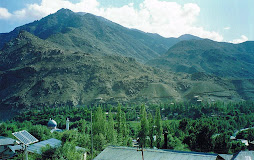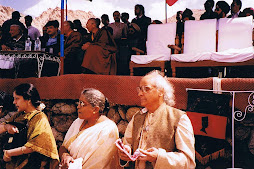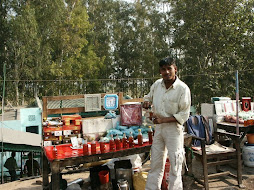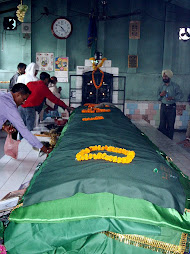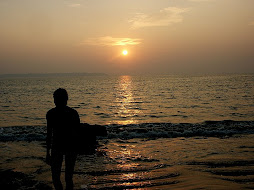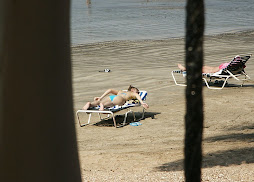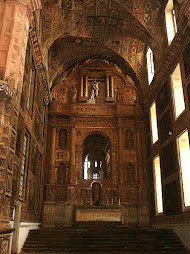



People of J&K have faced three uncalled for wars from our neighbor Pakistan and latest intrusion in Kargil area in 1999 is fresh in our memory. Our armed forces had aptly responded these challenges and many a heroes have emerged showing their courage and valour to protect our mother land. There have been 21 awardees of Param Vir Charka since independence and Kargil war also named ‘Operation Vijay” has shown courage of four men who were awarded highest gallantry award the Param Vir Charka, 9 Maha Vir Charka 6 Kirti Charka , 25 Shuarya Cahakra and number of other decorations. IAF officers and men who provided air support to our ground forces also won 2 Vir Charka and 27 Vayu Sena Medals. Most of us would recall TV coverage of Kargil war on Star TV where reporter Bharka Dutt talked to Capt Vikram Batra who after capturing Point 5140 said Yeh Dil Maange More! Soon after capturing Point 5140, he had radioed his commanding officer and said jubilantly, "Yeh Dil Mange More!" This slogan had become popular with millions of Indians as a spirit of Indian patriotism.
Param Vir Chakra
Param Vir Chakra (PVC) is the highest gallantry award for officers and other enlisted personnel of all military branches of India for the highest degree of valour in the presence of the enemy. PVC is the post-Independence equivalent of the Victoria Cross. The PVC was established on January 26, 1950, by the President of India, with effect from August 15, 1947, and presently it is the second highest award of the Government of India after Bharat Ratna .
Recapitulating Operation Vijay
Every year forward posts in Ladakh area were vacated by Indian and Pakistani forces in winter and reoccupied in spring. In early May 1999, Pakistan forces occupied about 130 abandoned forward posts in Kargil sector before schedule return of Indian forces. The Pakistan Army set up bases on the vantage peaks in the Indian side of Kashmir. Initially, these incursions were not noticed. Pakistani forces had been resorting to heavy artillery fire to provide cover for the infiltrators. But a tip-off by a local shepherd in the Batalik sector, led to the exposure of the infiltration. The Pakistani forces had a clear line of sight from their observation posts on NH 1A which is main supply route to Ladakh. The Pakistani shelling of this arterial road posed the serious threat Indian supply lines of Leh. The majority of posts along the Line of Control were adjacent to the highway, and therefore it was essential for Indian forces to recapture these posts.
The Pakistani intruders had positioned themselves on Tololing Top, Tiger Hill, Pt 4875, Pt 4590, Pt 5100 and Pt 5140.The names of these hill tops( points) became familiar to the people of India as these were getting reported in press and electronic media during successes of Indian forces. Most of the posts in the vicinity of the highway were got cleared by mid-June. Some parts of the highway near Drass witnessed sporadic shelling until the end of the “Operation Vijay”. However some of the posts occupied by Pakistanis offered stiff resistance, including Tiger Hill ,Point 5140 .Last of infiltrators were cleared by 26th July 1999. It was capture of these posts that our men showed their valour and won admiration of the people of India. Maps below indicate physical location of the hills mentioned.

source: Center for Contemporary Conflict) http://www.ccc.nps.navy.mil/research/kargil/war_in_kargil.pdf


Tiger Hill—The Conical hill in rear Photo by author
Here I have put together short biographical sketches and citations of 4 Paramvir Chakra awardees, two of whom were posthumous.
CAPTAIN VIKRAM BATRA
13 JAMMU AND KASHMIR RIFLES (IC 57556)
(POSTHUMOUS)

Vikram Batra was born on September 9th, 1974 in Mandi, Himachal Pradesh, to Mr. G.L. Batra and Mrs. Jai Kamal Batra. Batra joined the Indian military academy in Dehradun in 1996, and was commissioned in the Indian Army as Lieutenant of the 13 Jammu and Kashmir Rifles at Sopore, in Jammu and Kashmir. He rose to the rank of Captain.
As mention above soon after capturing Point 5140, he radioed his commanding officer and said jubilantly, "Yeh Dil Mange More!" After taking rest for 4 - 5 days he proceeded towards Point 4750, Nick-named Sher Shah for his unstinting courage. He captured Point 4750 and hoisted the national flag. He also played a commendable role in the capture of Tiger Hill. He had dedicated himself and was determined for total victory.
CITATION
During ‘Operation Vijay’, on 20 June 1999, Captain Vikram Batra, Commander Delta Company was tasked to attack Point 5140. Captain Batra with his company skirted around the feature from the East and maintaining surprise reached within assaulting distance of the enemy. Captain Batra reorganized his column and motivated his men to physically assault the enemy positions. Leading from the front, he in a daredevil assault pounced on the enemy and killed four of them in a hand-to hand fight. On 7 July 1999, in another operation in the area Pt 4875, his company was tasked to clear a narrow feature with sharp cuttings on either side and heavily fortified enemy defenses that covered the only approach to it. For speedy operation, Captain Batra assaulted the enemy position along a narrow ridge and engaged the enemy in a fierce hand –to-hand fight and killed five enemy soldiers at point blank range. Despite sustaining grave injuries, he crawled towards the enemy and hurled grenades clearing the position with utter disregard to his personal safety, leading from the front, he rallied his men and pressed on the attack and achieved a near impossible military task in the face of heavy enemy fire. The officer, however, succumbed to his injuries. Inspired by his daredevil act, his troops fell upon the enemy with vengeance, annihilated them and captured Point 4875.
Captain Vikram Batra, thus, displayed the most conspicuous personal bravery and leadership of the highest order in the face of the enemy and made the supreme sacrifice in the highest traditions of the Indian Army.
LIEUTENANT MANOJ KUMAR PANDEY
(POSTHUMOUS)

Lieutenant Manoj Kumar Pandey was the son of Gopi Chand Pandey, Gomti Nagar, Lucknow-Uttar Pradesh, who was awarded the Param Vir Chakra for his courage and leadership during adverse times. IC 56959W Captain Manoj Pandey, PVC belonged to Sitapur in Uttar Pradesh. His was eldest in his family. He was educated at Uttar Pradesh Sainik School Lucknow. He had a keen interest in sports, and Boxing and Body Building in particular. His last words were, "Na Chodnu" (Don't Spare Them). In his personal diary he wrote "Some goals are so worthy, it's glorious even to fail".
He was commissioned in the 1/11 Gorkha Rifles of the Indian Army. He forced back the intruders on June 11, 1999 at Batalik Sector in the Kargil war. He led his men to capture the Jubar top which was considered as important due to its strategic location. Quickly sizing up the situation, the young officer led his platoon along a narrow, treacherous ridge that led to the enemy position.
CITATION
Lieutenant Manoj Kumar Panday took part in a series of boldly led attacks during ‘operation Vijay ', forcing back the intruders with heavy losses in Battlik including the capture of Jaubar Top. On the night of 2/3 July 1999 during the advance to Khalubar as his platoon approached its final objective; it came under heavy and intense enemy fire from the surrounding heights. Lieutenant Pandey was tasked to clear the interfering enemy positions to prevent his battalion from getting day lighted, being in a vulnerable position. He quickly moved his platoon to an advantageous position under intense enemy fire, sent one section to clear the enemy positions from the right and himself proceeded to clear the enemy positions from the left. Fearlessly assaulting the first enemy position, he killed two enemy personnel and destroyed the second position by killing two more. He was injured on the shoulder and legs while clearing the third position. Undaunted and without caring for his grievous injuries, he continued to lead the assault on the fourth position urging his men and destroyed the same with a grenade, even as he got a fatal burst on his forehead. This singular daredevil act of Lieutenant Manoj Kumar Pandey provided the critical firm base for the companies, which finally led to capture of Khalubar. The officer, however, succumbed to his injuries.
Lieutenant Majoj Kumar Pandey, thus, displayed most conspicuous bravery, indomitable courage, outstanding leadership and devotion to duty and made the supreme sacrifice in the highest traditions of the Indian Army.
GRENADIER YOGINDER SINGH YADAV
18 GRENADIERS (2690-572)

A resident of Aurangabad Ahir under the Bulandshahr District, Uttar Pradesh he is a 26-year-old soldier. While he and his elder Jitendra have both been in the Army since December 1996, his younger brother Deepak is a student. He lost his father recently and his mother Shanmta Devi looks after the family farms.
CITATION
Grenadier Yogender Singh Yadav was part of the leading team of a Ghatak Platoon tasked to capture Tiger Hill on the night of ¾ July 1999. The approach to the top was steep, snowbound and rocky. Grenadier Yogender Singh Yadav, unmindful of the danger involved, volunteered to lead and fix the rope for his team to climb up. On seeing the team, the enemy opened intense automatic, grenade, rocket and artillery fire killing the Commander and two of his colleagues and the platoon was stalled. Realising the gravity of the situation, Grenadier Yogender Singh Yadav crawled up to the enemy position to silence it and in the process sustained multiple bullet injuries. Unmindful of his injuries and in the hail of enemy bullets, Grenadier Yogender Singh Yadav continued climbing towards the enemy positions, lobbed grenades, continued firing from his weapons and killed four enemy soldiers in close combat an silenced the automatic fire. Despite multiple bullet injuries, he refused to be evacuated and continued the charge. Inspired by his gallant act, the platoon charged on the other positions with renewed punch and captured Tiger Hill Top.
Grenadier Yogender Singh Yadav displayed the most conspicuous courage, indomitable gallantry, grit and determination under extreme adverse circumstances.
RIFLEMAN SANJAY KUMAR
13 JAMMU AND KASHMIR RIFLES (13760533)
He was born on 3rd March 1976 at village Bakain, Distt. Bilaspur to Shri Durga Ram. He did his schooling in the Govt. Senior Secondary School Kalol., He worked as driver in private company during 1993-94 in Delhi.He was selected in Indian Army in 4th June 1996. He got posting in the 13th Jammu and Kashmir Rifles. His village had sent many brave men in the Army. His uncle is in the Army while his second brother is also a sepoy with the Indo-Tibet Border Police (ITBP).
CITATION

Rifleman Sanjay Kumar volunteered to be the leading scout of the attacking column tasked to capture area Flat Top of Point 4875 in the Mushkoh Valley on 4 July 1999. During the attack when enemy automatic fire from one of the sangars posed stiff opposition and stalled the column, Rifleman Sanjay Kumar realizing the gravity of the situation and with utter disregard to his personal safety, charged at the enemy. In the ensuing hand-to- hand combat, he killed three of the intruders and was himself seriously injured. Despite his injuries, he charged onto the second sangar. Taken totally by surprise, the enemy left behind a Universal Machine Gun and started running.
Rifleman Sanjay Kumar picked up the UMG and killed the fleeing enemy. Although bleeding profusely, he refused to be evacuated. The brave action on his part motivated his comrades and they took no notice of the treacherous terrain and charged onto the enemy and wrested the area Flat Top from the hands of the enemy.
Rifleman Sanjay Kumar displayed most conspicuous gallantry, cool courage and devotion to duty of an exceptionally high order in the face of the enemy.
Source http://indianarmy.nic.in/PVC/photo_19.htm
Operation Vijay
July 26, 1999 will go down in Indian history as a day when the Indian forces achieved a glorious victory over Pakistani army in Kargil sector . The day has since been marked as Kargil Vijay Diwas (Victory Day) in India. On this day nation remembers 527 brave soldiers and airmen who laid down their lives for the success of "Operation Vijay”
I have put together courageous feats of only four of soldiers who have earned highest military honours. There are many more that got recognition and others who laid down their lives to keep Indian National flag flying on India territory. Long live India and the spirit of freedom
Ramesh Lalwani
6th Oct 2006
.









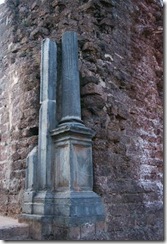
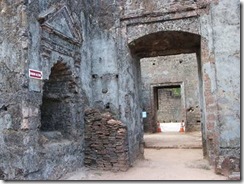
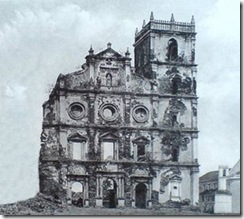

![clip_image002[1]](http://lh6.ggpht.com/rlalwani23/SF0Blcr_iWI/AAAAAAAAAnQ/Vt9uOPv4_rY/clip_image002%5B1%5D_thumb.jpg?imgmax=800)




![clip_image002[1]](http://lh3.ggpht.com/rlalwani23/SFvKZkaZVhI/AAAAAAAAAm4/vsAjtJ8U_EM/clip_image002%5B1%5D_thumb.jpg?imgmax=800)




























